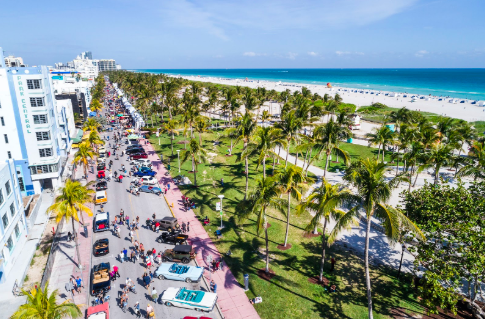Omega Travels – Miami Beach
October 31, 2019
Lavish, glowing hotels. Palm trees and bathing suits. Mustangs as common as Jeep Wranglers and Ferraris. This is Miami Beach, possibly the most famous beach destination in the United States and worldwide. Two parts imported Carribean culture and three parts Americana Nightlife, the city lives up to its neon-lit reputation. Delicious, authentic pan-Hispanic cuisine, lively clubs, and freshly-developed resorts line the streets.
However, there is also a saliently visible division between the millionaires, the tourists, and the urban class. The islands dotting the bay house McMansions with docks instead of driveways and yachts instead of cars, not a hundred feet from foreclosed, crumbling tenement buildings. The employment structure of Miami, as least as it seems from a firsthand perspective, takes a tourist economy to the extreme – it’s not just about local hospitality for vacationers, but the city is full of Central American and Carribean, especially Cuban, expatriates, present primarily to serve the wealthy inhabitants. Cuban cigar shops sell their famous authenticity to eager visitors, hotel, restaurant, and taxi workers speak English only secondarily (or barely at all), and crestfallen mass housing shares the city blocks with beachside resorts.
While the situation certainly speaks well toward the lack of segregation, the complete absence of anything resembling a resident middle class is as much of a shocking change from northern NJ life as the summer weather and palm trees in October. And what a different world it is, too; assisted by the socioeconomic landscape, Miami’s art-deco and modernist buildings, insane supercars, and colorful, carefree atmosphere cultivate a deep sense of surrealism. It’s more than a coastal, relaxed vacation destination; it’s a real, functioning city which has collectively and wholly decided to live like Jimmy Buffett.

